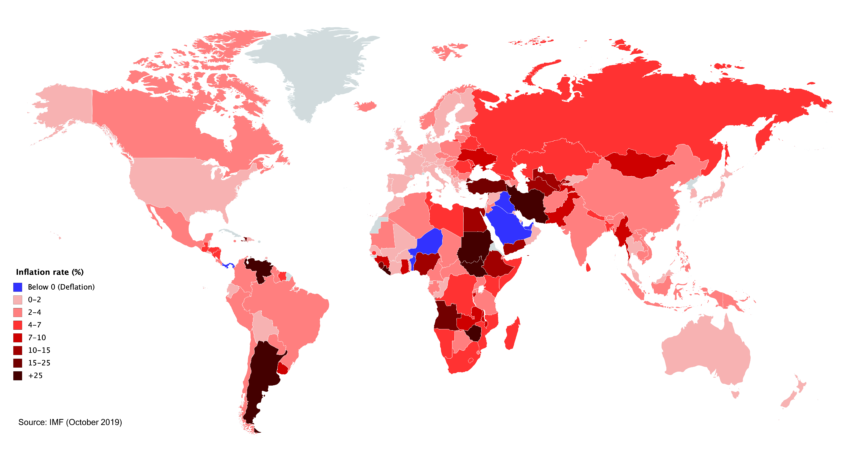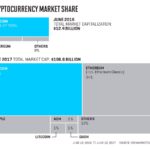Brazil’s inflation rate rose to 4.87 percent in November. This is the highest level in over 14 months.
Market expectations of a slight increase from 4.85% to 4.76% were exceeded.
The rising consumer prices, the higher spending by government, and changing inflation expectations all point towards a complex economic environment that could have an impact on Brazilian household in the months to come.
Inflation drivers
Inflation is mainly due to the increase in prices of critical goods such as foods, beverages, transport, and personal expenses.
The cost of food and beverages increased by 7.63% from the 6.65% in the preceding month. This shows that Brazilians are paying more for their daily necessities.
Transport prices rose by 3.11 percent, an increase of 2.48% from October.
The industries that directly impact household finances as well as consumer sentiment are vital.
These increases, according to analysts, are due to a number of factors, such as global supply-chain interruptions, manufacturing problems at home, and increased transportation costs, which have risen in tandem with gasoline prices.
Brazil is facing greater economic pressures as it strives for stability and prosperity.
The role of public spending
The rise in inflation is largely due to increased government expenditures. The Brazilian government implemented measures in order to promote the economy and increase consumption, especially after the Covid-19 epidemic.
These methods may have improved the Gross Domestic Product of the country in recent years, but they are also raising concerns over long-term inflationary pressures.
The government’s spending on welfare, infrastructure and financial assistance to families have created a positive ripple effect that has increased demand for goods and services.
It is important to find a good balance between fiscal policies and inflationary fears.
Officials from the central bank have cautioned that when consumers expect higher prices, they may try to increase their prices before time. This will fuel inflation.
What is the driving force behind price rises?
The inflation rate can be determined by a closer examination of certain industries.
It is particularly alarming to see the increase in prices of food and beverages.
This problem is a result of poor harvests, increased logistics costs, and changing consumption patterns.
This increase of 7.63% indicates that the agricultural sector continues to face challenges, resulting in food insecurity among many Brazilians.
Transport, another important sector, increased by 3.11 %, mainly due to fuel prices and weak supply chains.
Housing and utility prices fell from 6,12% to just 4%.
The stabilisation of energy prices and the property market, which offers some relief to consumers, could explain this decline.
This implies an economic mix in which certain sectors are experiencing great stress while other are enjoying a calm period.
In October, Brazil’s rate of inflation reached a record high.
Brazil’s inflation rate in October of 2024 was 4.76%, which is the highest in over a year. It had been 4.42% and estimated to be 4.72%.
Housing and utility prices also increased, by 6,12% against 4.58%.
Transport inflation, on the other hand, fell (2.48 vs. 3.22).
CPI increased by 0.56% in comparison to the previous month. This is the highest increase since February, and was generally predicted.
Housing costs (1.49%) and domestic electricity (4.74%) were the two biggest pressures, followed by food and drinks (1.06%), with meat being at 5.81%.
The inflation rate continued to rise in October, far above the 3% central bank target and the maximum tolerance level of 4.5%. After a severe dry spell that drove up energy and crop prices.
Inflationary pressures also increased due to a real economic slowdown and the expectation of fiscal expansion. The central bank responded by raising rates twice this year.
Forecast: Navigating the Future of Inflation in Brazil
The central bank is in a critical position as Brazil faces these economic challenges.
Monitor inflation expectations and change monetary policies will be crucial to manage public sentiment and consumer behavior.
Continued inflation has a negative impact on the economic stability of households and overall.
The recent rise in Brazil’s rate of inflation to 4.87 percent reflects the complex combination between rising prices in key sectors, aggressive spending by government, and changing consumer expectations.
The coming months are crucial in defining Brazil’s future economic outlook, and could have serious consequences both for consumers as well as businesses.
These issues need to be managed effectively in order to maintain stability and achieve long-term growth.
As new information becomes available, this post Brazil’s Inflation hits 14-month High as Consumer Prices Surge amid Rising Government Spending may be updated.






